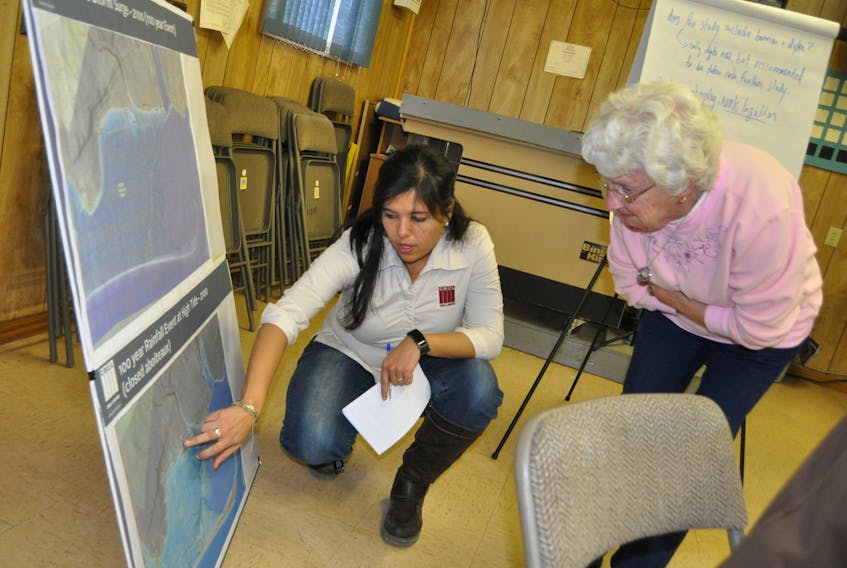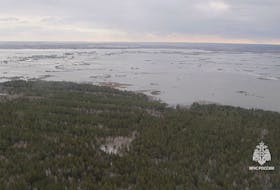ADVOCATE, N.S. – As studies continue into flood risks in this community, consultants were here yesterday to gather feedback and listen to concerns from local residents.
Victoria Fernandez of CBCL, along with Erica Brook of Upland and Cumberland County EMO coordinator Mike Johnson, led a session at the Advocate Fire Hall to help assess risks due to rising sea levels and questions about the ongoing protective ability of a dike and a natural gravel barrier.
“Raising the dike is an option, but by how much? Two metres? One metre? Twenty centimetres?” asked Fernandez. “It all depends on what is at risk, what is at stake, what activities are in the community, and what is the future outlook of the community. That’s why one of the objectives of the study is assessing the costs and the benefits of the options.”
Johnson began looking at doing a study in Advocate about a year ago when federal government funding became available. Eventually, Halifax form CBCL was awarded a contract to complete a study determining the risks to the Advocate area.
About 20 people attended yesterday’s meeting, which included a series of information panels demonstrating the potential for flooding in the community due to extreme high tides, and figuring in factors such as storm surges and the rising sea level, which Fernandez estimated to be about 15 cm by 2025.
The mean high tide elevation is four metres, while the elevation of the dike surrounding Advocate is 6.5 metres, and the gravel barrier “seawall” beyond that is about eight metres. The dike is equipped with a series of aboiteaux to drain storm water, a function that is not always possible due to the tides.
“We can pick up the technical date and put it on paper, but some things are harder to get and that’s the feelings and emotions of the people of the community,” said Johnson. “The focus of this study is to look at potential risks to Advocate in terms of flooding, what infrastructure would be at risk, and determine what the best option is – either moving those parts of the community that are at risk or building up the dike to protect it.”
The residents had a number of comments and concerns about everything from ditches to driftwood, but many emphasized the importance of maintaining the gravel barrier.
“If that’s not looked after and cared for, you can put as much dike in as you want, but you’re going to have a problem,” said Arden Fletcher. “I’ve lived here and I’ve seen the water come in behind the dike, and I’ve seen it come down from West Advocate, where it runs through that rock barrier like a brook. It has nothing to do with the dike.”
The CBCL study is expected to be completed and submitted to Cumberland County council by the end of March. From there are many potential steps and more potential studies, according to Johnson, who said public meetings will continue in the meantime. The next gathering is expected for a Saturday, possibly March 24.
Brook explained that Advocate is not alone, but one of many coastal communities around the world that has to deal with rising seas. She commended the residents for their handling of the issue.
“It’s not that you’re the only one, but you’re one of the first ones,” she said. “Sea level rise is happening globally, and it doesn’t matter what country you come from or what language you speak. Many coastal communities are realizing what happened in the past and solutions that were taken are not going to work in the future.









